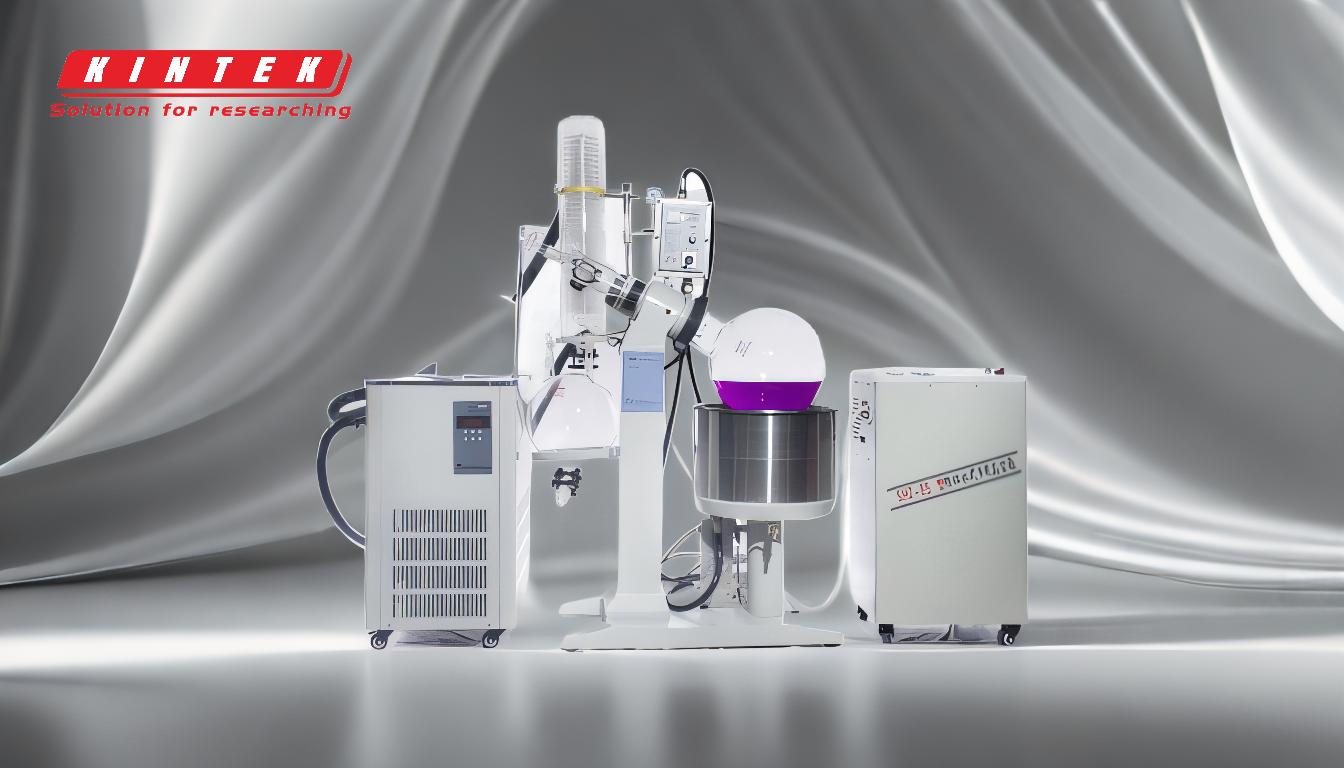Rotary evaporation does use heat, but it is applied in a controlled manner to optimize the process. The primary goal of rotary evaporation is to remove solvents from samples efficiently, and heat is one of the key factors that facilitate this process. However, the heat is applied in conjunction with reduced pressure (vacuum) to lower the boiling point of the solvent, allowing evaporation to occur at lower temperatures. This is particularly useful for heat-sensitive substances, as it minimizes the risk of decomposition or degradation. The process involves rotating the sample in a heated water bath, which creates a thin film of the liquid, increasing the surface area for evaporation. The solvent vapors are then condensed and collected, leaving behind the concentrated sample.
Key Points Explained:

-
Role of Heat in Rotary Evaporation:
- Heat is applied to the sample through a heated water bath, which helps accelerate the evaporation process.
- The temperature of the water bath is typically controlled and set based on the boiling point of the solvent and the sensitivity of the sample.
- For example, in the case of ethanol, the water bath is heated to 30-40°C, which is sufficient to promote evaporation without causing thermal degradation.
-
Combination of Heat and Reduced Pressure:
- Rotary evaporation relies on both heat and reduced pressure to lower the boiling point of the solvent.
- By reducing the pressure using a vacuum pump, the solvent can evaporate at a much lower temperature than its normal boiling point.
- This combination allows for gentle and efficient removal of solvents, especially for heat-sensitive compounds.
-
Formation of a Thin Film:
- The rotation of the evaporation flask creates a thin film of the liquid on the interior surface of the flask.
- This increases the surface area for evaporation, making the process faster and more efficient.
- The rotation speed is typically set between 150-200 rpm to ensure optimal film formation.
-
Condensation and Collection:
- The evaporated solvent vapors are condensed back into liquid form using a condenser.
- The condenser is typically cooled to a temperature between -10°C and 0°C to ensure efficient condensation.
- The condensed solvent is then collected in a separate flask, leaving behind the concentrated sample.
-
Applications and Advantages:
- Rotary evaporation is widely used in laboratories for solvent removal, particularly for samples that are heat-sensitive or have high boiling points.
- The process is gentle, efficient, and allows for the recovery of solvents, making it environmentally friendly.
- It is commonly used in chemistry, biochemistry, and pharmaceutical research for concentrating samples and purifying compounds.
-
Temperature Control:
- Precise temperature control is crucial in rotary evaporation to prevent overheating and degradation of the sample.
- The water bath temperature is set based on the solvent's properties, and the condenser temperature is adjusted to ensure effective condensation.
- This careful control ensures that the process is both efficient and safe.
-
Example of a Typical Rotary Evaporation Setup:
- The distilling flask is filled to no more than 50% of its volume to allow for proper rotation and film formation.
- The water bath is heated to a specific temperature (e.g., 30-40°C for ethanol), and the condenser is cooled to a low temperature (e.g., -10°C to 0°C).
- A vacuum is applied to reduce the pressure, and the flask is rotated at 150-200 rpm to create the thin film and promote evaporation.
In summary, rotary evaporation does use heat, but it is carefully controlled and combined with reduced pressure to optimize the process. This makes it an effective and gentle method for solvent removal, particularly for heat-sensitive samples. The combination of heat, rotation, and vacuum ensures efficient evaporation and condensation, making rotary evaporation a versatile and widely used technique in laboratories.
Summary Table:
| Key Aspect | Description |
|---|---|
| Role of Heat | Controlled heating in a water bath accelerates evaporation without degradation. |
| Heat + Reduced Pressure | Lowers solvent boiling point, enabling gentle evaporation at lower temperatures. |
| Thin Film Formation | Rotation creates a thin film, increasing surface area for faster evaporation. |
| Condensation & Collection | Solvent vapors are condensed and collected, leaving a concentrated sample. |
| Applications | Ideal for heat-sensitive samples, solvent recovery, and lab efficiency. |
| Temperature Control | Precise control ensures safe and efficient evaporation. |
Discover how rotary evaporation can enhance your lab processes—contact us today for expert guidance!












